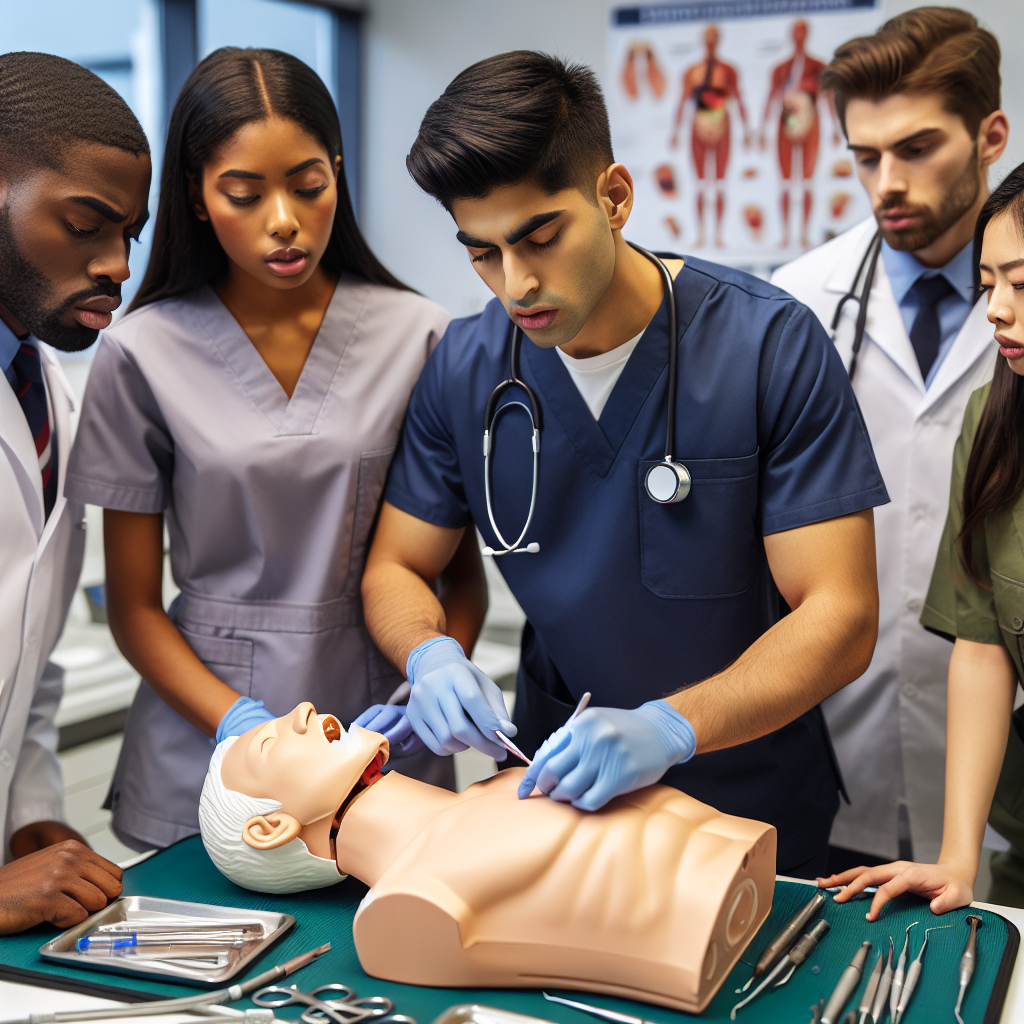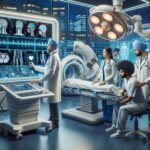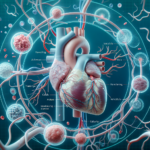
Revolutionizing Dental Emergencies: The 3D Systems D2P Effect
Imagine a world where dental emergencies are handled with the precision of a pilot navigating through a storm. That’s the promise of 3D Systems D2P technology. It’s not just about responding to emergencies; it’s about being prepared for them with a level of detail and foresight that was previously unimaginable.
Article-at-a-Glance: Transformative Training with 3D Systems D2P
- 3D Systems D2P introduces a new era of precision and customization in dental emergency preparedness.
- Dental professionals can now simulate and prepare for emergencies with unparalleled accuracy.
- The technology empowers teams to create personalized training scenarios, enhancing skill sets and confidence.
- 3D Systems D2P’s impact on preparedness can be measured, ensuring continual improvement in emergency responses.
- Cost analysis reveals the long-term benefits and affordability of integrating 3D Systems D2P into dental practices.
Breaking Down 3D Systems D2P Technology
So, what’s the magic behind 3D Systems D2P? It’s a groundbreaking approach that takes digital imaging to the next level. By converting medical scans into 3D models, dental professionals can visualize and plan for complex procedures with a clarity that was once a pipe dream.
Core Components of D2P
At the heart of D2P lies a trio of components: advanced imaging software, precision 3D printing, and hands-on simulation. Together, they create a trifecta of tools that bring dental emergency scenarios to life, right before your eyes.
Incorporating 3DP Point-of-Care for Dental Emergencies
When a dental emergency strikes, there’s no time to waste. The 3DP Point-of-Care system allows dental teams to quickly turn digital models into physical replicas, enabling them to strategize and practice their response to real-world scenarios.
This isn’t just about rehearsing steps; it’s about understanding the anatomy and nuances of each unique case. It’s about transforming a moment of crisis into a well-orchestrated ballet of expertise.
And let’s not forget the impact on patient care. With D2P, you can tailor treatment plans to the individual, ensuring a level of personalization that sets new standards in dental care.
Empowering Dental Professionals with Realistic Simulations
There’s an old saying: ‘Practice makes perfect.’ With D2P’s realistic simulations, dental professionals can practice like never before. It’s the difference between reading about a procedure and actually performing it on a lifelike model.
Enhancing Skills through 3D Scenario-Based Training
Imagine having the ability to face a myriad of dental emergencies without the risk of making a single mistake on a patient. That’s the power of 3D scenario-based training. It’s not just practice; it’s empowerment.
From Virtual Modeling to Physical Practice: D2P’s Training Cycle
The D2P training cycle is a seamless flow from virtual to physical. First, you delve into the digital world, crafting and manipulating 3D models. Then, you bring those models into the tangible realm, practicing your skills on high-fidelity replicas that mimic real dental tissues.
Customization: Tailoring Emergencies to Training Needs
Every dental practice is unique, and so are the emergencies they face. D2P’s customization options allow you to create scenarios that mirror the specific challenges of your practice environment. It’s about being prepared for exactly what you’ll encounter.
Personalized Scenarios for Diverse Dental Settings
No two dental emergencies are the same, and with D2P, your training won’t be either. Whether it’s a rare complication or a common procedure under pressure, you can craft the scenarios that match your needs.
- Recreate a complex root canal with exact anatomical precision.
- Simulate a traumatic dental injury, complete with realistic tissue damage.
- Prepare for the unexpected with scenarios that push the boundaries of your skills.
- Design a series of escalating challenges to build confidence and expertise.
- Customize the difficulty level to match the experience of your team.
With D2P, the possibilities are as limitless as your commitment to excellence.
Advanced Customization Techniques for the D2P System
But how do you create these custom scenarios? It starts with the D2P software, where you can manipulate every aspect of the dental anatomy. Add in complications, vary the anatomy, and even simulate different patient reactions.
Then, take your scenario from the screen to the bench with 3D printing that brings your design to life. It’s a process that ensures your team is ready for anything the dental world throws at them.
Now, let’s dive deeper into how this technology is shaping the future of dental emergency preparedness.
Enhancing Skills through 3D Scenario-Based Training
Let’s get real—when a dental emergency happens, the pressure is on. But with 3D scenario-based training, you’re not just reacting; you’re engaging with a situation you’ve already mastered digitally. This kind of preparation sharpens decision-making skills and boosts the confidence of the entire dental team.
From Virtual Modeling to Physical Practice: D2P’s Training Cycle
The D2P training cycle is a continuous loop of learning and application. It starts in a virtual environment where you’re free to explore and experiment. Then, you transition to hands-on practice with 3D printed models that feel and look like the real deal. This cycle ensures that when the time comes, your hands and your mind are in perfect sync.
Customization: Tailoring Emergencies to Training Needs
Customization is key in D2P’s approach. It’s not about one-size-fits-all; it’s about creating scenarios that are as unique as the patients you treat. This personalized approach ensures that your team is not just prepared, but prepared for what’s most likely to come through your doors.
Personalized Scenarios for Diverse Dental Settings
Whether you’re in a bustling city center or a quiet rural town, the emergencies you face will differ. D2P’s technology allows you to tailor scenarios to the demographics and common cases of your specific location. This means your team will be well-versed in the types of emergencies most relevant to your practice.
Advanced Customization Techniques for the D2P System
D2P’s advanced customization techniques are where your creative and clinical skills merge. Using the software, you can design scenarios with varying levels of complexity, introduce anatomical variations, and even simulate patient behavior during emergencies. This level of detail ensures that your team is not just practicing, but perfecting their response to real-life situations.
Impact Evaluation: 3D Training Outcomes
But how do we know if all this training is making a difference? Impact evaluation is crucial. By assessing the performance before and after D2P training, you can see just how much your team’s preparedness has improved. This isn’t just about feeling more confident; it’s about measurable, demonstrable skill enhancement.
- Track response times to common emergency scenarios.
- Measure the accuracy and effectiveness of emergency interventions.
- Assess the team’s ability to work cohesively under pressure.
- Collect patient feedback on their emergency care experience.
- Analyze the reduction in procedural complications following training.
With D2P, you’re not just hoping for the best; you’re actively ensuring it through targeted, effective training.
Quantifying Preparedness Post-D2P Training
After the buzz of training fades, what’s left? Numbers that tell a story. By quantifying the team’s preparedness post-D2P training, you get a clear picture of where you stand. This might include reduced response times, higher success rates in emergency procedures, or even a decrease in patient anxiety levels during treatments. These metrics are your scoreboard, showing the direct impact of D2P training on your practice’s efficiency and patient care quality.
Feedback Loop: Improving D2P with User Experience
Ever heard the phrase, “Feedback is the breakfast of champions”? Well, it’s dinner and lunch for D2P training, too. User experience is invaluable, and every comment, every suggestion is a chance to refine the system. It’s a feedback loop that keeps the training fresh, relevant, and always evolving to meet the needs of dental professionals and their patients.
Cost Analysis: Evaluating Affordability and Returns on Training Investment
Let’s talk dollars and sense. Investing in D2P training is a decision that should be weighed against its potential returns. It’s not just the upfront cost, but also the long-term savings and benefits that need to be considered. A thorough cost analysis will help you understand the affordability and the value of integrating D2P into your practice’s training regimen.
Comparing D2P Training Costs with Traditional Methods
When stacking D2P up against traditional training methods, consider not only the financial investment but also the efficiency, engagement, and depth of learning. D2P might have a higher initial cost, but the return on investment comes in the form of more thorough and faster training, less waste of materials, and potentially fewer costly mistakes in real emergencies.
Long-Term Financial Benefits of Enhanced Emergency Preparedness
But the real magic of D2P training is in the long game. Enhanced emergency preparedness can lead to better patient outcomes, fewer malpractice suits, and a stronger reputation. These factors contribute to a healthier bottom line over time. Plus, the confidence and skill that your team builds can become a unique selling point for your practice, attracting more patients and higher retention rates.
Testimonials and Case Studies: D2P In Real-World Settings
Nothing speaks louder than success stories and real-world results. Testimonials from fellow dental professionals who have implemented D2P training provide insights into the practical benefits and challenges. Case studies, on the other hand, give you a comprehensive look at how D2P has been applied in various scenarios, highlighting the adaptability and effectiveness of the system in improving emergency preparedness.
So, let’s continue to explore how D2P is making waves in dental practices around the globe, and what this could mean for your team’s future in emergency preparedness.
First-Hand Accounts: Success Stories and Improved Outcomes
Take Dr. Sarah, for instance, who runs a busy urban dental clinic. After integrating D2P into her practice, she witnessed a remarkable 30% decrease in procedural errors during emergency treatments. She attributes this to the hands-on practice her team got with 3D printed models that closely mimic real-life scenarios.
Or consider the rural dental practice of Dr. James, who faced unique challenges due to the lack of nearby specialist support. With D2P training, his team can now confidently handle emergencies that previously would have required patient transfers, saving critical time and improving patient outcomes.
Case Studies: Comprehensive Review of D2P Implementation
Let’s delve into a case study from a pediatric dental clinic that faced a high rate of dental trauma cases. After adopting D2P, the clinic saw a 40% improvement in their response to these emergencies. The detailed simulations allowed the dental team to practice delicate procedures in a controlled environment, enhancing their skills and reducing the stress of real-life situations.
Another case study from a dental school showed how D2P training improved the students’ performance by 50% compared to traditional learning methods. The immersive, hands-on experience provided by D2P prepared the students for real-world practice in ways that textbooks and lectures simply couldn’t match.
Next Steps for Dental Practices: Implementing 3D Systems D2P
If you’re ready to take your dental emergency preparedness to the next level, implementing 3D Systems D2P is your next step. It’s a game-changer for your practice, and the process is simpler than you might think.
Initial Set-Up: Integrating the D2P Model into Your Practice
Getting started with D2P involves a few key steps. First, you’ll need to acquire the necessary hardware and software. This includes a high-quality 3D printer, the D2P software, and training for your team on how to use these tools effectively. Next, you’ll collaborate with a D2P specialist to tailor the system to your practice’s specific needs, ensuring that your team gets the most out of the training scenarios.
Remember, the initial set-up is an investment in your practice’s future. It’s about building a foundation that will enable your team to respond to dental emergencies with confidence and precision.
Ongoing Support and Updates for the D2P System
But the journey doesn’t end with the initial set-up. Ongoing support and updates are crucial for keeping your D2P system at the cutting edge. Regular software updates will introduce new features and improvements, while support from the D2P team will help you troubleshoot any issues and answer any questions that arise as you continue to use the system.
This ongoing relationship ensures that your practice remains at the forefront of dental emergency preparedness, ready to tackle any challenge that comes your way.
Frequently Asked Questions (FAQ)
It’s natural to have questions about a new system like D2P. Let’s address some of the most common inquiries to help clarify how D2P can benefit your practice.
- What exactly is 3D Systems D2P?
- How does D2P enhance dental emergency preparedness?
- Can D2P be customized for any dental practice?
- What are the cost implications of adopting D2P?
By understanding the answers to these questions, you’ll be better equipped to make an informed decision about integrating D2P into your dental practice.
What is 3D Systems D2P?
3D Systems D2P is a comprehensive system that transforms medical imaging data into accurate, 3D printed models for hands-on training. It includes software for creating detailed simulations, a 3D printer for producing lifelike replicas, and a suite of tools for practicing emergency dental procedures.
How does D2P enhance dental emergency preparedness?
D2P enhances preparedness by providing realistic, hands-on training experiences. It allows dental professionals to practice on 3D printed models that closely replicate the complexities of actual dental emergencies, honing their skills in a risk-free environment.
Can D2P be customized for any dental practice?
Absolutely. D2P’s software allows for extensive customization, enabling practices to create scenarios that reflect the specific challenges they are most likely to encounter. This ensures that the training is relevant and directly applicable to the practice’s needs.
What are the cost implications of adopting D2P?
While there is an initial investment in equipment and training, the long-term benefits of improved emergency response, patient satisfaction, and potential reduction in malpractice risks can outweigh the costs. Additionally, the efficiency and effectiveness of training with D2P can lead to financial savings over time.
With these insights, you’re now equipped to consider how 3D Systems D2P can revolutionize emergency preparedness in your dental practice. It’s an investment in your team, your patients, and the future of your practice.
What is 3D Systems D2P?
3D Systems D2P, which stands for “DICOM to Print,” is a cutting-edge technology that converts medical imaging data into precise 3D models. It’s a comprehensive suite that includes specialized software for creating detailed simulations, a 3D printer for crafting lifelike replicas, and a variety of tools designed to facilitate hands-on practice for dental professionals. With D2P, dental teams can visualize, plan, and execute emergency procedures with an accuracy that mirrors real-life scenarios.
How does D2P enhance dental emergency preparedness?
D2P takes dental emergency preparedness to a whole new level by enabling teams to practice on 3D printed models that replicate the intricacies of actual dental emergencies. This hands-on approach to training allows dental professionals to refine their skills and responses in a controlled, risk-free environment. By simulating real-world challenges, D2P helps teams become more adept at handling emergencies, which can lead to quicker, more effective treatments and better patient outcomes.





